Nuclear Energy
A community for nuclear energy enthusiasts.
Source: https://www.world-nuclear-news.org/Articles/IAEA-team-completes-Romanian-regulatory-review
Romania is committed to maintaining and strengthening its regulatory framework for nuclear and radiation safety, an International Atomic Energy Agency (IAEA) team of experts has concluded. However, the Integrated Regulatory Review Service (IRRS) mission team recommended improving the coordination among government agencies concerned with radiation source facilities and activities.
IRRS missions are designed to strengthen the effectiveness of the national nuclear and radiation safety regulatory infrastructure, based on IAEA safety standards and international good practices, while recognising the responsibility of each country to ensure nuclear and radiation safety.
The IRRS team concluded a 12-day mission to Romania on 10 November. The mission, carried out at the request of the Romanian government and hosted by the National Commission for Nuclear Activities Control (CNCAN), marks the start of the third IRRS mission cycle to Romania after previous missions in 2006 and 2011.
The team - comprising 20 senior regulatory experts from 15 countries, as well as IAEA staff members and one observer from the European Commission, reviewed facilities and activities regulated by CNCAN.
The mission identified several good performances, including: the performance, during a CNCAN inspection, of an on-the-spot written test for the authorised staff dedicated to radiation safety and emergency preparedness; the development of a detailed cooperation protocol between CNCAN and the Romanian customs authority to ensure the safe inspection of radioactive packages; the prompt update of the regulation for reactors and installations with multiple modules, after the signature of a memorandum of understanding between CNCAN and NuScale Power, to evaluate small modular reactors (SMRs); and the systematic and holistic approach of CNCAN to address the interface of safety and security in its regulatory oversight programme for nuclear power plants.
"Romania has a comprehensive and mature regulatory infrastructure for nuclear safety," said IRRS team leader Peter Elder, vice-president of technical support with the Canadian Nuclear Safety Commission. "CNCAN's challenge will be to prepare itself for the expected expansion of Romania's nuclear power programme. We recommend that Romania further improves its radiation protection framework, especially in the medical sector."
The IRRS team identified several recommendations and suggestions, including: CNCAN should implement its systematic training programme including inspector qualification and enhance its inspection programme to be used in the planning and conduct of inspections, in accordance with a graded approach; and the Ministry of Health should revise and implement the regulatory requirements on radiation protection, including justification of practices, dose constraints for the public exposure and consumer products provision consistent with IAEA safety standards.
The final mission report will be provided to the government in about three months. Romania plans to make the report public.
"We would like to thank the IRRS team and Romanian counterparts for their intensive work during the last two weeks," said CNCAN President Cantemir Ciurea-Ercau. "The IRRS mission confirms our commitment for continuous improvement of nuclear and radiation safety. CNCAN will use the outcomes of the mission to update its action plan to strengthen the regulatory capabilities and national infrastructure for safety."
Romania operates two 720 MWe pressurised heavy water reactors (PHWRs) at the Cernavoda nuclear power plant. Fuel for the reactors is produced domestically. Preparations for constructing two more 720 MWe PHWRs at Cernavoda and a 462 MWe SMR power plant at Doicești are under way. Romania also operates a dual core TRIGA Mark II research reactor which produces radioisotopes for industrial applications and is used for research and training. The country operates one waste disposal facility and plans to build two more, including a deep geological repository.
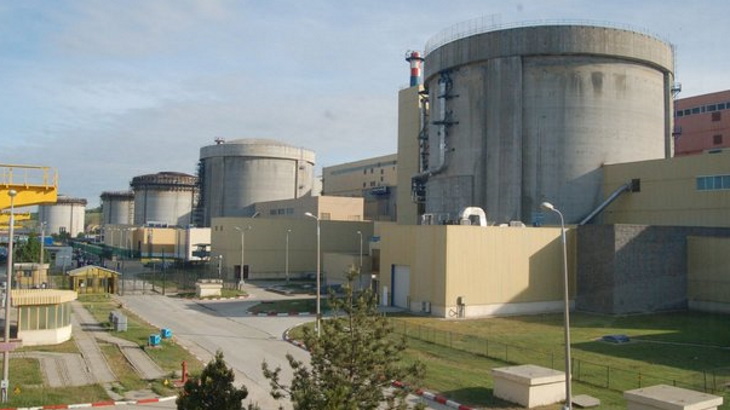
Source: https://www.world-nuclear-news.org/Articles/Permission-granted-for-Leningrad-8-construction
The main construction period for the VVER-1200 unit will begin in 2025 after the go-ahead was given to begin the second stage of the construction project for what will be the seventh and eighth units at Leningrad nuclear power plants.
Work at the construction site has seen a pit prepared for the nuclear island of the seventh unit, with construction on-going for a pit for its turbine island. The permit issued by Rosatom to its Rosenergoatom division, under the country's Town Planning Code, "gives the right to begin construction and installation work on 67 capital construction projects" for the eighth unit.
Vladimir Pereguda, director of the Leningrad nuclear power plant, said: "The main period of construction of the eighth power unit will begin in 2025. The first key operation is planned for this year - concreting the foundation slab of the reactor building. In accordance with the road map, power unit 8 of the Leningrad NPP should be put into operation in 2032, power unit 7 almost two years earlier."
The Leningrad nuclear power plant is one of the largest in Russia with an installed capacity of 4400 MWe. Leningrad 1 shut down in 2018 after 45 years of operation. Leningrad 2, also a 1000 MWe RBMK unit, started up in 1975 and was permanently shut down in November 2020. As the first two of the plant's four RBMK-1000 units shut down, new VVER-1200 units started at the neighbouring Leningrad II plant. The 60-year service life of these fifth and sixth units (also known as Leningrad II-1 and Leningrad II-2) secures power supply until the 2080s.
Rosatom said the project has already received the necessary documents confirming it complies with environmental requirements and legislation in the field of environmental protection, the requirements of technical regulations in the field of nuclear, environmental and industrial safety.
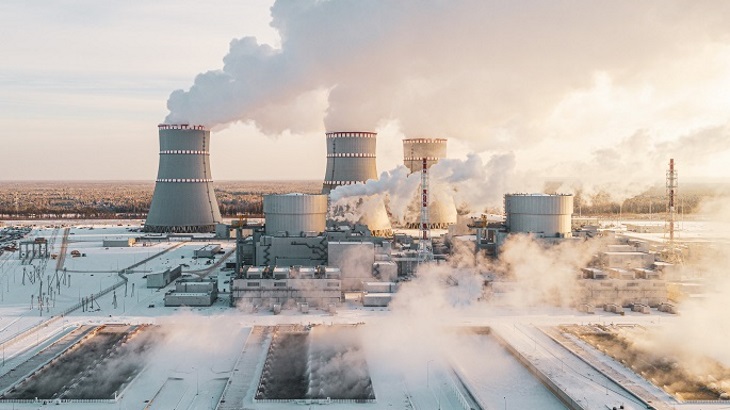
Source: https://www.world-nuclear-news.org/Articles/Agreement-to-spur-US-production-of-iridium-isotope
A joint product agreement between the US Department of Energy Isotope Program and QSA Global Inc is intended to lead to the re-establishment of domestic production of iridium-192. The USA has been dependent on imports of the isotope for the last 20 years.
Iridium-192 (Ir-192) is used in industrial gamma ray radiography for non-destructive testing to detect structural damage to metal parts such as castings, forgings, and weld defects. The technique is crucial for ensuring the quality of manufacturing processes, particularly in sectors such as shipbuilding, auto manufacturing, and aerospace, and is also used for on-site integrity assessments of oil and gas pipelines.
With a half-life of 73.8 days, Ir-192 is produced by the neutron irradiation of 99.9% iridium metal targets, usually inside a nuclear reactor.
The agreement will see Oak Ridge National Laboratory (ORNL) collaborate with Massachusetts-based QSA Global, an international supplier of radiation sources used in testing and measurement applications, to finalise a reactor target design and prepare associated packaging and transportation procedures for shipment of targets back to QSA. The partners plan to begin routine irradiations with new product for high-priority domestic applications in 2024.
ORNL produces, purifies, and ships more than 300 stable and radioactive isotopes used in medicine, research, industry, and space exploration in the High Flux Isotope Reactor.
The Department of Energy (DOE) Isotope Program, part of the Office of Science, produces critical radioactive and stable isotopes that are in short supply or that no domestic entity has the infrastructure or core competency to produce. The programme funds the National Isotope Development Center, which manages the coordination of isotope production across facilities at national laboratories including ORNL.
"Part of the mission of the DOE Isotope Program is to reduce US dependency on foreign supply," said DOE Isotope Program Director Jehanne Gillo. "We are extremely pleased to work with QSA Global Inc to re-establish a U.S. supply of this critical radioisotope to promote stability to an otherwise fragile supply chain."
"We appreciate our long-term, reliable supply of isotopes from the DOE Isotope Program and look forward to adding Ir-192 to the list," said Jake Bourn, vice president and general manager of QSA Global, adding that this will strengthen the supply chain, benefit domestic manufacturing, and strengthen US energy independence.

Source: https://www.world-nuclear-news.org/Articles/Sixth-NuScale-SMR-simulator-opens-in-Korea
NuScale Power Corporation has announced the opening of the first privately-funded NuScale Energy Exploration Centre (E2 Centre) at Seoul National University (SNU) in partnership with GS Energy Corporation, Doosan Enerbility and Samsung C&T Corporation.
The E2 Centre offers users a hands-on opportunity to apply nuclear science and engineering principles through simulated, real-world nuclear power plant operation scenarios. The E2 Centre employs state-of-the-art computer modeling to simulate a NuScale VOYGR-12, 924 MWe, small modular reactor (SMR) plant powered by 12 NuScale Power Modules.
"As the first E2 Centre in Asia, the educational training hub serves as a workforce development tool for South Korea to develop the next generation of advanced nuclear experts, technologists, and operators, positioning the country to become a regional leader of SMR deployment in Asia," NuScale said.
"NuScale's groundbreaking SMRs are years ahead of the global competition as the only advanced nuclear technology with US Nuclear Regulatory Commission approval, and today's opening of the E2 Centre allows South Korea to advance its position as a global leader in clean energy," said NuScale Co-Founder and Chief Technology Officer José Reyes. "With the support of our partners GS Energy, Doosan, Samsung C&T, and Seoul National University, we are excited to reach this new milestone in our collaboration to advance the shared goal of global decarbonisation."
"The E2 Centre provides our students with an unrivaled opportunity to engage in hands-on SMR operations, cultivating the expertise essential for leading the global clean energy transition," said Professor Eung Soo Kim, Head of SNU's Department of Nuclear Engineering. "We are proud to be the first institution in Asia to integrate NuScale's state-of-the-art simulation technology into our curriculum."
The first centre opened at Oregon State University in November 2020, followed by a second at the University of Idaho at the Center for Advanced Energy Studies in August 2021. The third centre is located at Texas A&M's Engineering Experiment Station and opened in November 2021. The fourth one opened in October 2022 in Pocatello, Idaho, in collaboration with Idaho State University.
The first E2 Centre outside the USA opened at the University Politehnica of Bucharest in Romania in May this year.
The NuScale Power Module on which the VOYGR nuclear power plants are based is a pressurised water reactor with all the components for steam generation and heat exchange incorporated into a single 77 MWe unit. The company offers a 12-module VOYGR-12 power plant is capable of generating 924 MWe as well as the four-module VOYGR-4 (308 MWe) and six-module VOYGR-6 (462 MWe) plants and other configurations based on customer needs.
Doosan Enerbility - under its former name of Doosan Heavy Industries & Construction - in 2019 signed a business collaboration agreement with NuScale for the supply of NuScale Power Modules and other equipment. Together with Korean financial investors, the company has made an equity investment of nearly USD104 million in NuScale Power.
In May, private power generation company GS Energy signed a memorandum of understanding with Uljin County in North Gyeongsang Province, South Korea, to consider the use of NuScale Power's SMR technology to provide heat and power to the planned Uljin Nuclear Hydrogen National Industrial Complex.
A pilot six-module plant had been planned to be built near Idaho Falls in the USA as the Utah Associated Municipal Power Systems (UAMPS)-led Carbon Free Power Project, expected to be operational by 2030. However, UAMPS and NuScale last week announced they had mutually agreed to terminate the project.

Source: https://www.world-nuclear-news.org/Articles/Vallecitos-reactor-removal-complete
Nearly 60 years after shutting down for the last time, the reactor vessel of the prototype boiling water reactor in California has been removed from its containment and shipped for final disposal by NorthStar Group Services, Inc.
The Vallecitos Boiling Water Reactor (VBWR) was the first privately owned and operated nuclear power plant to deliver significant quantities of electricity to a public grid and was also the first nuclear power plant to be licensed by the US Atomic Energy Commission, bearing the licence number NPR-1. The 24 MWe reactor operated from 1957 to 1963. After its closure, it was deactivated, defuelled, and put into so-called SAFESTOR status in preparation for eventual decommissioning.
SAFESTOR - or SAFSTOR - according to the US Nuclear Regulatory Commission is a long-term storage condition for a permanently shut-down nuclear power plant during which radioactive contamination decreases substantially, making subsequent decontamination and demolition easier and reducing the amount of low-level radioactive waste requiring disposal.
After more than a year of planning, the vessel - which is 9 feet (2.75 metres) in diameter, 22 feet tall and weighs more than 100,000 pounds (45 tonnes) - was prepared for shipment and removed by NorthStar. It was transported directly by road and rail to the licensed disposal facility of NorthStar affiliate Waste Control Specialists, LLC in Texas, where it arrived in early November.
The power plant was located at the Vallecitos Nuclear Center (VNC) in Sunol, California, about 40 miles (65 km) east of San Francisco. The site, owned by GE Hitachi Nuclear Energy (GEH), was also home to the General Electric Test Reactor and the ESADA Vallecitos Experimental Superheat Reactor, and was used for research work for the US Atomic Energy Commission's nuclear energy programme and the civilian nuclear power industry from 1965-1975. Decommissioning of the other reactors at the VNC is also under way.
In May, NorthStar and GEH announced plans to eventually transfer ownership of the entire VNC to NorthStar to complete decommissioning and site restoration. The companies are currently seeking the regulatory approvals necessary to enable full transfer of the site and associated licence to NorthStar, NorthStar said.
NorthStar is also carrying out decommissioning and site restoration at the former Vermont Yankee nuclear power station site, which it purchased from Entergy in 2019, just over four years after the 604 MWe boiling water reactor's closure. It is also carrying out accelerated decommissioning of Duke Energy's Crystal River 3 nuclear power plant in Florida through its Accelerated Decommissioning Partners joint venture with Orano USA.
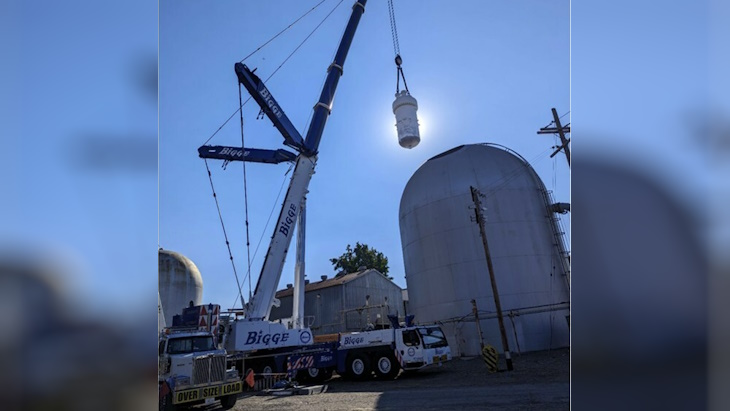
Source: https://www.world-nuclear-news.org/Articles/Construction-schedule-agreed-for-Paks-II-in-Hungar
Hungarian Foreign Minister Péter Szijjártó and Rosatom's Director General Alexei Likhachev have signed an agreement on the schedule for the construction of the Paks II nuclear power plant.
Although the detail of the agreed schedule has not been released, Szijjártó (pictured, right, with Likhachev) said on his Facebook page: "We signed the Paks II schedule, based on which we will connect the new nuclear power plant to the network at the beginning of the next decade. It's been a long journey but the work is finally about construction and not paperwork."
During a visit to the site, he highlighted the international nature of the project: "We are proud that the construction of two new power units at the Paks II is currently the largest nuclear project in Europe that has received a construction licence. It is truly international, since in addition to the Russian general contractor, 94 Hungarian companies and many American, German, French, Swedish and Austrian contractors participate in it."
He added that the new units will mean Hungary can boost its economic performance at the same time as cutting its carbon emissions, as well as providing it with energy security.
Likhachev said "we are ready to implement this project as efficiently as possible", noting there were already four VVER-1200 units operating in Russia, while the second Belarusian unit was handed over earlier this month and another 14 units with VVER-1200 reactors are being built at other foreign sites. He said that the handover was expected in the early 2030s with a workforce trained, and the supply of fuel assured.
According to the official Paks II project website, Likhachev added: "We are well aware that the international environment is not exactly friendly towards Rosatom, but we are ready to implement this project to the maximum despite external pressure."
The Paks II project was launched in early 2014 by an intergovernmental agreement between Hungary and Russia for two VVER-1200 reactors to be supplied by Rosatom, with the contract supported by a Russian state loan to finance the majority of the project. The construction licence application was submitted in July 2020 to construct Paks II alongside the existing Paks plant, 100 kilometres southwest of Budapest on the banks of the Danube river. The construction licence was issued in August 2022.
The existing four units at Paks are VVER-440 reactors that started up between 1982 and 1987 and they produce about half of the country's electricity. Their design lifetime was for 30 years but that was extended in 2005 by 20 years to between 2032 and 2037. In December, the Hungarian Parliament approved a proposal to further extend their lifespan, which means preparations can begin on operating the plant into the 2050s.
Hungary is pressing ahead with the Russian nuclear power plant project despite other European Union countries cutting, or reducing, their energy links with Russia following the outbreak of its war with Ukraine. Szijjártó has said that Hungary will not agree to any EU sanctions against Russia which affect nuclear energy.
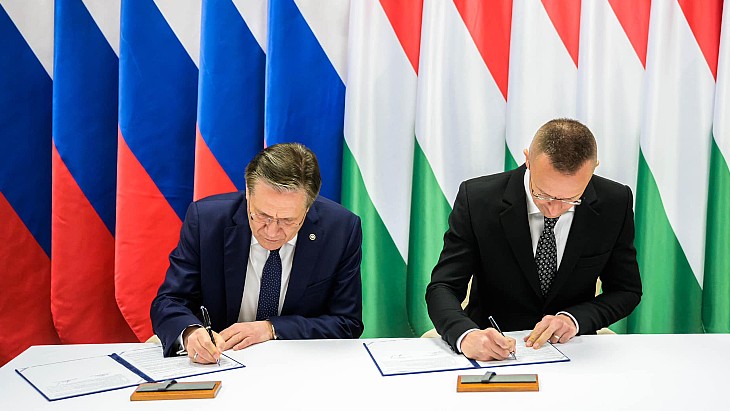
Source: https://www.world-nuclear-news.org/Articles/ASN-to-extend-deadline-for-upgrades-to-900-MWe-rea
France's nuclear safety regulator, the Autorité de Sûreté Nucléaire (ASN), has said it is prepared to give EDF more time in order to implement safety upgrades required at its fleet of 900 MWe nuclear power reactors.
EDF's 32 operating 900 MWe reactors came into commercial operation between 1977 and 1988, and include the oldest of the country's current nuclear fleet. Such reactors are in operation at EDF's Blayais, Bugey, Chinon, Cruas-Meysse, Dampierre, Gravelines, Saint-Laurent and Tricastin plants.
ASN reviews all French reactors on a 10-yearly basis. In order to take advantage of the standardised nature of EDF's reactors, these reviews are performed in two steps. Firstly, the 'generic' review phase, which covers subjects common to all 900 MWe reactors. Secondly, the 'specific' review phase, which relates to each reactor individually, and which will run until 2031.
In February 2021, ASN set the conditions for the continued operation of EDF's 900 MWe reactors beyond 40 years, completing the 'generic' phase of the review. The regulator said it considered the measures planned by EDF combined with those prescribed by ASN would ensure the safety of the units for a further 10 years of operation.
The measures include verifying the conformity of the reactors with their reference system, as well as improving their ability to withstand more severe attacks "of internal or external origin". Modifications will also limit the radiological consequences of accidents without core meltdown. Additionally, improvements will be made in the arrangements for managing accidental or aggressive situations affecting the used fuel storage pools at the units.
So far, EDF has carried out or initiated the fourth ten-yearly inspections of 16 of its reactors, during which the majority of safety improvements are implemented.
In October last year, EDF requested the postponement of the deadlines for some of the requirements of this decision, "given the difficulties in being able to respect them". EDF said these include: the occurrence of technical hazards during the implementation of certain requirements; changes in the scheduling of outages for fuel renewal, linked in particular to the discovery of stress corrosion on auxiliary lines, to long-term accidental outages and to tensions affecting the electrical network; and the concomitance of other periodic reviews, causing strain on its engineering capabilities.
"The modifications requested by EDF also aim to standardise the deadlines between the reactors, in order to facilitate the industrial programming of the work, to limit the number of different configurations of the reactors and thus to facilitate the appropriation of safety improvements by the teams responsible for operations," ASN said.
"Taking into account the difficulties presented by EDF and the justifications provided regarding the deadline extensions, ASN considers the request acceptable."
The application file presented by EDF and the ASN's draft amending decision are now subject to a three-week public consultation.
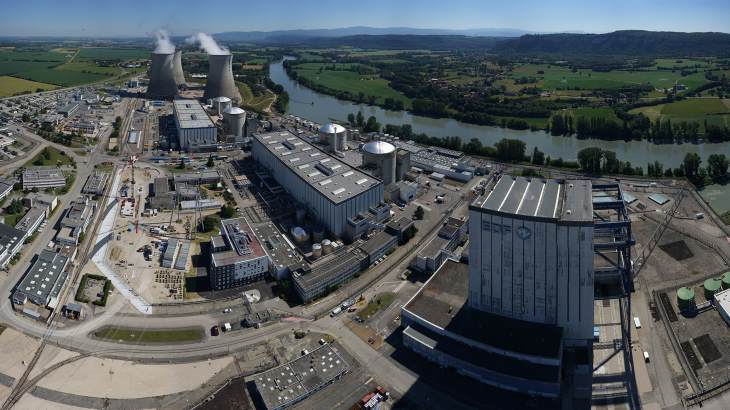
Source: https://www.world-nuclear-news.org/Articles/IAEA-sees-enhancement-of-Swiss-nuclear-security
An International Atomic Energy Agency (IAEA) team of experts has completed a follow-up nuclear security advisory mission to Switzerland. The International Physical Protection Advisory Service (IPPAS) mission concluded Switzerland has strengthened its nuclear security regime since a mission in 2018.
IPPAS missions are intended to assist IAEA member states in strengthening their national nuclear security regime, providing advice from peers on implementing international instruments and IAEA guidance on the protection of nuclear and other radioactive materials and facilities. They can be conducted on both a nationwide and facility-specific basis.
The latest mission - conducted from 30 October to 10 November - was carried out at the request of the Swiss government and hosted by the Swiss Federal Nuclear Safety Inspectorate (ENSI), the Swiss Federal Office of Energy (SFOE) and the Swiss Federal Office of Public Health (FOPH).
The twelve-day mission concludes the cycle initiated with the IPPAS mission to Switzerland, conducted in 2018. For the first time, this IPPAS mission covered all five modules of the IPPAS programme, with a review of the security of radioactive material, associated facilities and associated activities conducted in addition to reviews of the nuclear security regime, nuclear facilities, transport and information and computer security.
The review team, led by Pedro Lardiez Holgado, Head of the Nuclear Security Division of Spain's Nuclear Safety Council, included eight experts from Belgium, Canada, the Czech Republic, Germany, Spain, Turkey, the UK, the USA and one IAEA staff member.
The team identified significant progress in addressing the findings of the 2018 mission and observed how the nuclear security regime has been enhanced in Switzerland since then. It was noted that Switzerland has a strong nuclear security regime and is committed to continuous improvement in the security of nuclear and other radioactive material.
"The follow-up mission in Switzerland shows its commitment to nuclear security and its openness in receiving an external review of the national nuclear security regime," said Arvydas Stadalnikas, Head of the Integrated Nuclear Security Approaches Unit at the IAEA Division of Nuclear Security. "The inclusion of one additional module on the security of radioactive material underscores Switzerland's integrated approach towards physical protection. The mission's findings indicate a well-established national nuclear security regime and its alignment with the IAEA nuclear security guidance."
ENSI Director General Marc Kenzelmann said: "I would like to thank everyone involved in Switzerland for their great commitment to the extensive preparations and for their dedication during the two-week peer review. We are very grateful to the IPPAS team for their critical scrutiny of the security measures.
"The recommendations of the international experts are extremely important for ENSI, the Federal Office of Public Health, the Swiss Federal Office of Energy and for further partners in the nuclear security domain. We need to work together to systematically and consistently strengthen nuclear security in Switzerland."
Switzerland currently has four nuclear reactors generating about 35% of its electricity.

Agreement comes as country gears up for ambitions reactor new-build programme.
The price of nuclear energy is to be capped and profits from its sale returned to consumers if prices rise above set thresholds under a new deal agreed between EDF and the government on Tuesday (November 14).
The complex deal, reached after months of negotiations, is aimed at protecting consumers and businesses from rising prices but also ensuring state nuclear operator EDF can find the funds it needs to build future nuclear reactors.
The two sides agreed on €70/MWh as an average reference level for nuclear power prices.
France generates around 65% of its electricity from 56 commercial nuclear reactors and also has ambitious plans to add to the fleet with a new generation of plants.
The new framework will include taxing some of the EDF’s revenues if energy prices exceed certain thresholds and redistributing the funds to consumers and companies.
The goal is to try to keep the price of nuclear power at an average of about €70/MWh over a 15-year period, above EDF’s estimated production costs. French wholesale power prices are still well above €100/MWh at present.
Under the agreement, which will need approval from the European Commission, if energy prices head upwards of about €78/MWh the state would recoup half of the extra revenues earned in tax, while any revenue above a threshold of €110/MWh would be taxed at 90%.
The new framework would apply from 2026 after the expiry of an existing one known as Arenh, under which EDF is obligated to sell a third of its electricity to rival companies at a price regulated by the state, currently set at €42/MWh. Energy companies then sell this electricity to customers at their own prices.
When they have used up their quota of energy from EDF at the regulated rate, energy companies must buy electricity at the market rate, which can fluctuate greatly according to supply and demand.
At one point in 2022, the market rate for electricity reached €600/MWh, in large part due to market speculation and the war in Ukraine.
EDF claims that the current €42/MWh state-regulated price for its nuclear energy is too low to allow it to operate, maintain and invest in its nuclear reactors.
The deal announced on Tuesday will replace Arenh and aims to help avoid price fluctuation whilst ensuring EDF can invest in its nuclear reactors.
“This deal was indispensable to guarantee the competitiveness of our industry, the visibility and stability of prices for our households and the development of EDF,” finance minister Bruno Le Maire told reporters.
He said the full nationalisation of EDF this year did not mean it could function at a loss.
“We are not in the Soviet Union,” Le Maire said.
“EDF must be able to be profit making and raise the money it needs for future investments.”
Moscow increasingly considering nuclear for industry and communities in isolated areas.
Russia’s state nuclear corporation Rosatom has signed an agreement that could lead to the construction of low-power nuclear reactors in the Norilsk area in the administrative region of Krasnoyarsk Krai, Siberia
Rosatom said the agreement of intent and cooperation is for the construction of low-power nuclear power plants for energy supply to the Norilsk Industrial Region.
Norilsk, a closed city, is the world's northernmost city with more than 180,000 inhabitants, and the second-largest city – after Murmansk – inside the Arctic Circle.
The agreement was signed by Rosatom director-general Alexey Likhachev and the president of Norilsk Nickel, Vladimir Potanin. Norilsk Nickel is a Russian nickel and palladium mining and smelting company whose largest operations are in the north of Siberia.
The agreement stipulates that the companies will study possible options and determine a priority site for the placement of a ground-based small nuclear power plant that could operate in the 2030s.
They will also consider the configuration of the planned facility and the infrastructure needed for its construction and operation.
Likhachev said the option of a small modular reactor (SMR) plant based on Russia’s RITM-400 reactor technology, a version of which is in service powering icebreakers, may be the best option for the project. He said this would offer a reliable source of electricity with long-term predictable tariffs.
The Norilsk Industrial Region’s power system is owned and operated by Norilsk-Taimyr Energy Company, part of the Norilsk Nickel group, but is not part of Russia’s unified grid.
“Taking into account its strategic development plans, Norilsk Nickel is considering the possibility of building new generating capacities,” Rosatom said. “One of the options is low-power nuclear power plants.”
Russia is increasingly considering small nuclear power plants to provide power to industry and communities in isolated areas.
The country operates the world’s first floating nuclear power station, the Akademik Lomonosov, docked at Pevek in Chukotka, in the Far East.
In April, Russia’s nuclear regulator issued a construction permit for a land-based SMR in Yakutia, also known as Sakha, in Russia’s Far East. It will have a single RITM-200N unit with a proposed capacity of at least 55 MW.
There are plans for further floating plants to provide power for the Baimskaya minerals mining complex in Chukotka.
Source: https://www.world-nuclear-news.org/Articles/Illinois-to-lift-moratorium-on-nuclear-constructio
Governor JB Pritzker has said he will sign a new bill lifting Illinois' ban on the construction of new nuclear reactors, after the state's lawmakers passed new legislation that will allow the construction of small modular reactors of up to 300 MWe capacity from 2026.
The amended bill - HB2473 - was passed by the Illinois Senate on 8 November, by 44 votes to 7, and by the state's House of Representatives the following day, by 98 votes to 8.
Eleven nuclear reactors currently supply more than half of Illinois' electricity. Energy legislation passed by Illinois lawmakers and signed by Pritzker in 2021 ensured the continued operation of the state's existing large-scale nuclear generation fleet, but the state has had a moratorium on the construction of new nuclear capacity since 1987. The Illinois Senate and House earlier this year passed a bill that would overturn the ban, but Pritzker vetoed the earlier bill, SB76, in August saying definitions in the bill were too vague and also that it lacked sufficient regulatory protections.
The new bill, among other things, instructs the Illinois Emergency Management and Office of Homeland Security to adopt rules for the regulation of small modular reactors, including rules regarding decommissioning and emergency preparedness.
Pritzker said the Illinois General Assembly had engaged in "productive negotiations" about how to improve the legislation. "This new bill addresses my concerns from the spring sessions proposal and I'm looking forward to reviewing and signing it when it reaches my desk," he said. "Illinois is already a leader in clean energy under the Climate and Equitable Jobs Act and developing an on-ramp for responsible small nuclear reactor development is another step towards a cleaner, climate-friendly future for our state."
Senator Sue Rezin, one of the lead sponsors of the new bill, said the new legislation had been designed to "thoroughly and specifically" reflect the governor's concerns.
"The federal regulatory permitting process already takes six to eight years, so if we want to take advantage of the amazing advancements in new nuclear technology that have occurred over the past decade and prevent our state from falling behind the rest of the nation, we need to end this moratorium now," she said.
"Nuclear provides clean, reliable, and secure energy that we can count on as we strive to reach our clean energy goals in Illinois. With the passage of this legislation, we provide our state with the opportunity to truly embrace the next generation of nuclear technology and all of the benefits that it offers."
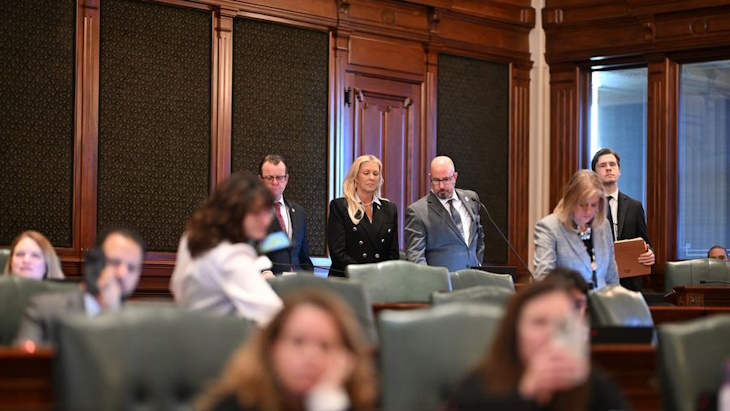
Source: https://www.world-nuclear-news.org/Articles/IAEA-and-ICAO-enhance-cooperation
The International Atomic Energy Agency (IAEA) and the International Civil Aviation Organization (ICAO) have agreed to enhance their cooperation around the transport of radioactive materials by air. In particular, they aim to improve the efficiency and speed of these shipments.
Nuclear medicine is based on access to radiopharmaceuticals for a variety of diagnostic uses and specific therapies. Getting radiopharmaceuticals from the manufacturer to hospitals and medical clinics depends on fast and reliable transport, including by air. More than 10,000 hospitals worldwide use radioisotopes in medicine, mostly for diagnosis.
In a joint statement, IAEA Director General Rafael Mariano Grossi and ICAO Secretary General Juan Carlos Salazar said the agreement "highlights the importance of adherence to the IAEA safety standards for the safe use of radioactive materials and to ICAO standards for global civil aviation safety and security".
The agreement builds on the cooperation between both UN bodies on matters of common interest that began in 1960.
It encompasses the development and review of relevant IAEA safety standards and the harmonisation of best practices globally, with the IAEA and ICAO collaborating to collect and analyse associated information. Raising stakeholder awareness through education, training, and outreach are also foreseen, including around emergency preparedness. In addition, it covers radiation research and information exchange towards radiation protection in civil aviation, especially regarding cosmic radiation exposure to flight crews.
The joint statement highlights that the "stronger mutual cooperation will create a conducive environment for countries to harness the benefits of the peaceful uses of nuclear technology in meeting the United Nations Sustainable Development Goals", and helps set the stage for deeper collaboration in the near future.
"The IAEA's role in ensuring the safe transport of radioactive material by air is essential in the carriage of short-lived radiopharmaceuticals and other crucial radioactive materials," Salazar said. "ICAO welcomes the heightening of our collaboration in this vitally important area of mutual interest."
Grossi added: "It is very important that the work the IAEA and ICAO undertake in developing and strengthening the implementation of international standards is complementary. The IAEA greatly values ICAO's long-standing contribution to the development and review of IAEA safety standards. We can work even more closely together in other areas of common interest, such as in reducing denials of, and delays in, shipment of radioactive material by air."

Source: https://www.world-nuclear-news.org/Articles/NWS
More than 60 years after disposal of low-level radioactive waste began at the repository site in Cumbria, work has started on the capping and securing of trenches and vaults which are full and ready for permanent closure.
Nuclear Waste Services said the initial work of the capping operations will take five years, with the first phase seeing a replacement membrane put in place over the old trenches to protect waste for up to 100 years.
When the site, near Drigg on the north west coast of England, opened it worked on landfill principles, with low- level waste tipped into clay-based trenches and covered with layers of stone and soil. This continued for about three decades until a new system was introduced in 1988 which saw low-level waste placed in containers and grouted prior to disposal in Vault 8, the first of similar facilities at the site.
The site has received wastes from a range of producers, including nuclear power plants, defence establishments, general industry, hospitals and universities. Between 1959 and 1995, some 800,000 cubic metres of waste were disposed of in seven trenches, which have since been covered with an interim cap. Vault 8 had a total capacity of 200,000 cubic metres of waste.
Mike Pigott, Director of Sites and Operations for NWS, said: "The Low Level Waste Repository is an important national asset and is critical to delivering the Nuclear Waste Services mission. I am pleased we’re progressing work on this long-term project with work commencing on site for this phase, it is vitally important that NWS caps the existing vaults and trenches to provide long-term protection to the wastes and the environment for generations to come.
"We’re making good progress on the project with a cap design agreed, infrastructure in place to deliver this work and permission to build the cap has been granted by the local authority. We will continue to work with our community to maintain our social licence to operate and are committed to being a considerate neighbour whilst delivering our important mission."
The repository in Cumbria is the UK's primary low-level waste disposal facility and continues to enable the safe and environmentally approved disposal of such materials in engineered vaults, although re-use, recycling, decontamination and incineration are now preferred, with the repository site treated as a last resort.
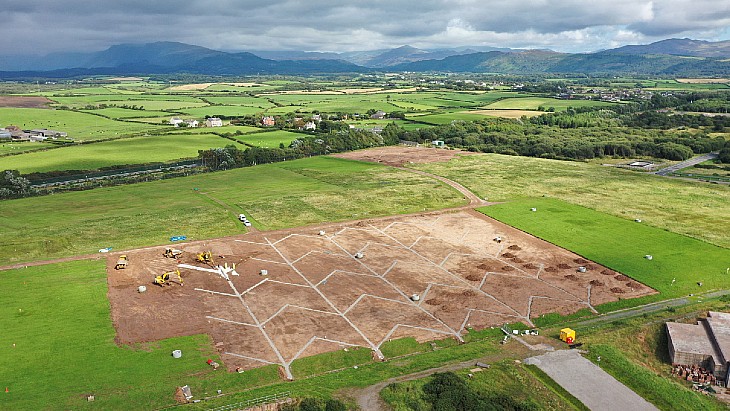
Source: https://www.world-nuclear-news.org/Articles/Foundation-in-place-for-first-mega-cooling-tower-a
The foundation for the world's first nuclear power ultra-large high-level seawater cooling tower has been laid at unit 1 of the Lianjiang plant in China's Guangdong province, State Power Investment Corp (SPIC) announced.
The final concrete for the circular foundation of the tower was poured on 12 November. The foundation is more than 10 metres wide and more than 2 metres thick. A total volume of about 15,900 cubic metres of concrete was used to form the foundation.
Once completed, the cooling tower will have a height of 218.7 metres and a diameter at its base of about 175 metres. The water spraying area of the tower is 20,000 square metres. It mainly consists of a foundation, inclined pillars, tower tube, and inlet. It consists of a central water shaft, water distribution system, heat exchange filler, water collection system, main water collection tank, and water eliminator.
"The application of seawater secondary circulation cooling technology in the Lianjiang nuclear power project will further enhance the environmental friendliness of nuclear power projects, broaden the layout and space for the development of nuclear power plant sites in China, and provide important demonstrations and reference for the development and construction of nuclear power plant sites in China," SPIC said.
The first phase of the Lianjiang nuclear power plant project - the first coastal nuclear power project developed and constructed by SPIC in Guangdong - will comprise two CAP1000 units. The site is eventually expected to house six such reactors. It is the first nuclear power plant in China to adopt seawater secondary circulation cooling technology, and is the first to develop and use a super-large cooling tower.
The construction of the first two 1250 MWe CAP1000 reactors - the Chinese version of the Westinghouse AP1000 - at the Lianjiang site was approved by China's State Council in September 2022. Excavation works for the units began in the same month. The first safety-related concrete for the nuclear island of unit 1 was poured last month.
Lianjiang unit 1 is expected to be completed and put into operation in 2028.

Source: https://www.world-nuclear-news.org/Articles/Agreement-to-consider-SMR-for-Norlisk-region
Russia's Rosatom and the Norilsk Nickel are to study possible options and sites for a small nuclear power reactor.
The agreement, signed by Rosatom Director General Alexei Likhachev (above right) and Nornickel President Vladimir Potanin (above left) will also consider the infrastructure that will be required for construction and operation of any new plant.
The development of the Norilsk industrial region and Norilsk Nickel means that more electricity generation will be needed beyond 2030, said Potanin.
He added: "The solution could be a nuclear power plant - a safe source of energy with minimal impact on the environment. Cooperation with Rosatom will allow Norilsk Nickel to gain access to advanced energy technologies, and ... develop the use of low-power nuclear power plants in remote regions of Russia."
Likhachev said the option of a small modular reactor (SMR) plant "based on the latest RITM-400 reactor unit" may be the priority as they consider the most suitable project for the region.
He added that the state corporation's projects "offer a reliable source of electricity with long-term predictable tariffs for consumers. In addition, nuclear energy can make a significant contribution to the fight against climate change due to the absence of CO2 emissions during the energy generation process, which is extremely important for the northern territories of our country". This meant such energy solutions were "in demand for large industrial consumers".
The energy system for the remote region is a standalone one run by Norilsk-Taimyr Energy Company, part of the Norilsk Nickel group. The city of Norilsk is within the Arctic circle in Russia's north, and has a population of more than 170,000 people.
The proposed RITM-400 is an 80 or 90 MW pressurised water reactor and would follow on from the RITM-200 reactors, based on the reactors used in the newest fleet of nuclear icebreakers.
Rosatom is already in the process of implementing a project to build an SMR in Yakutia, also in northern Russia, which will be used for industrial enterprises in the minerals industries as well as wider development of the region. Last week Rosatom's scientific and technical council approved the design of the RITM-200N - 190 MWt/55 MWe - proposed for the pilot facility in Yakutia, which is planned to be commissioned in 2028.
MMC Norilsk Nickel describes itself as "a diversified mining and metallurgical company, the world’s largest producer of palladium and high-grade nickel and a major producer of platinum and copper. The company also produces cobalt, rhodium, silver, gold, iridium, ruthenium, selenium, tellurium and other products", and is listed on the Moscow and on the Saint-Petersburg Stock Exchanges.
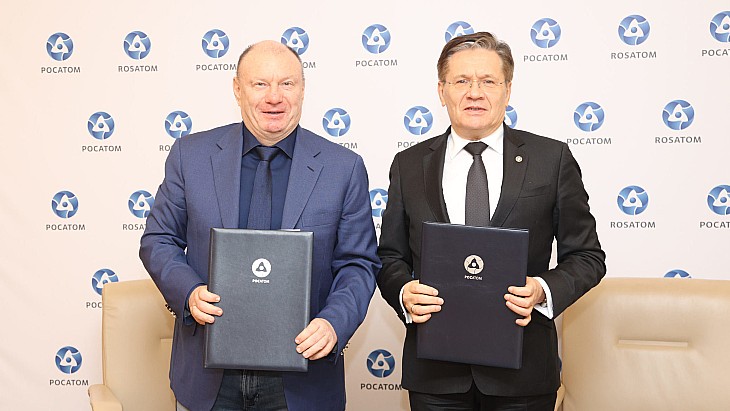
Beijing needs material to power nuclear expansion.
Kazakhstan, the world’s top uranium producer, has signed a long-term deal to supply the material to China, as the Central Asian country steps up cooperation with Beijing.
The deal, between the national atomic company Kazatomprom and China National Uranium Corporation Limited, is to deliver an unspecified amount of natural uranium concentrate, which is used in the nuclear fuel cycle.
“Volumes and specific contract terms cannot be disclosed due to confidentiality and commercial sensitivity,” Kazatomprom said in a statement.
“This contract with a major Chinese energy company will contribute to meeting China’s growing need for clean, net zero energy, while strengthening the historic long-term relationships between the two countries in the nuclear industry,” the company said.
Kazakhstan produces more than 40% of the world’s uranium. It cooperates with Russia on nuclear energy and is seen as a key supplier of uranium by major nuclear operators.
During a visit by French president Emmanuel Macron to the region earlier this month, Kazatomprom and French nuclear company Framatome signed a cooperation deal in the nuclear fuel cycle.
France, China, Russia and South Korea are competing to supply a reactor for what would be Kazakhstan's first nuclear power station. Plans for nuclear power will be put to a referendum by the end of the year.
Earlier this year Kazakhstan’s energy minister said Kazakhstan had received offers to build the facility from France, China, South Korea and Russia.
Kazatomprom, which for the last few years has restricted its own output in order to stabilise prices, is planning to end such cuts in 2025 and thus significantly increase production.
For seven years including 2023, the company has produced 20% less than its contracts with the Kazakh government allowed, with this year's output seen at 20,500-21,500 tonnes.
Source: https://www.world-nuclear-news.org/Articles/UK-regulators-consider-application-of-AI-in-nuclea
The UK's Office for Nuclear Regulation (ONR) and the Environment Agency have completed a project piloting a nuclear regulatory sandbox process, using artificial intelligence (AI) as the test case. This project, which has reported its conclusions, will help inform the development of a regulatory approach to AI.
"AI is starting to enter the nuclear sector with substantial investment," the regulators said in their concluding report. "The industry is requesting engagement with regulators to understand our regulatory views. ONR horizon scanning activities have also identified AI as a key trend. At present, there is limited established relevant good practice that can be used as a benchmark for regulating AI."
AI could be used in the nuclear industry to simulate reactor behaviour and inform reactor design, performance, safety and operation. This technology could have significant opportunities and also challenges for the sector, but there is limited relevant good practice currently available to inform regulators.
To address this, ONR convened an expert panel on the regulation of AI, which identified two applications of AI in the nuclear sector that could be further explored in a regulatory sandbox. These were: the application of AI to ensure appropriate and targeted plant maintenance; and real-time use of AI to facilitate the safe operability of robots in constrained spaces.
Regulatory sandboxing allows industry to explore with regulators how innovation proposals can progress to deployment.
The sandboxing process involved sprint workshops to consider the key aspects associated with the deployment of AI in the two problem/opportunity statements and the associated mock safety, security and environment case structures. These key aspects were then prioritised into four deep dive topics for each of the two AI applications and explored through regulatory sandboxing sessions.
The sandbox pilot - the first applied to nuclear regulation anywhere in the world - found that the benefits of AI should be clearly articulated, particularly in comparison to traditional technologies, and any risks understood and managed through robust arrangements. Understanding the reliability of AI systems is also important.
Other key recommendations summarised in the report included: phasing the deployment of AI systems to build confidence and experience; evaluating whether a principles-based approach to regulation is preferred, to take into account differing considerations for each potential application of AI; assuming any existing training data is no longer adequate when an AI system is transferred to a new operation or phase, and providing a hazard analysis for each potential deployment mode; understanding the complexity of the human/system interaction; and developing skills and guidance through accessing AI expertise, reflecting operational experience, and promoting behaviours that support a challenging safety, security and environmental culture.
The ONR said outputs from the sandbox pilot are being fed into existing work on AI within the UK's nuclear sector, as well as being shared with the wider regulatory community.
The project has helped establish the concept of an international regulatory sandbox, which ONR and the Environment Agency are exploring with the OCED Nuclear Energy Agency. ONR is also working with the US Nuclear Regulatory Commission and the Canadian Nuclear Safety Commission to write a 'principles paper' on the regulation of AI.
"This work will help inform the development of a universal regulatory approach to AI, including guidance and relevant good practice," ONR said.
"The sandbox pilot has given us the opportunity to develop a new tool to encourage innovative solutions without compromising safety and security or our regulatory independence," said Tom Eagleton, ONR's Head of Innovation. "This would not have been possible without a cross-regulatory effort and we look forward to continuing our collaboration with the Environment Agency to ensure a unified approach to innovation."
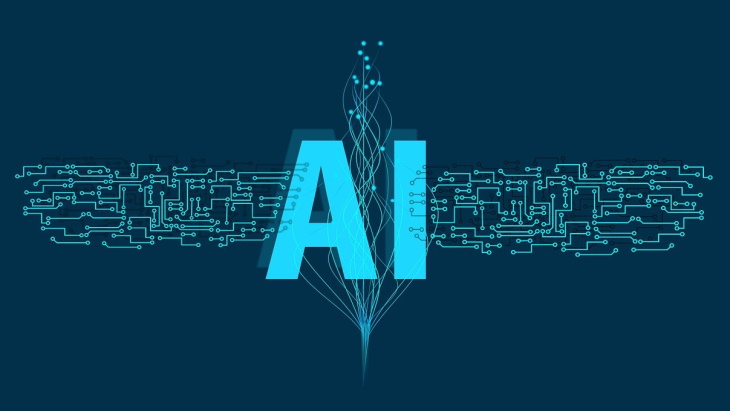
Source: https://www.world-nuclear-news.org/Articles/Hungary-says-Romania-to-continue-to-allow-nuclear
Hungarian Foreign Minister Peter Szijjarto has said after talks in Romania that the country will continue to allow the transport of Russian nuclear fuel to Hungary's Paks nuclear power plant.
In a post on Facebook after talks with Romania's Energy Minister Sebastian Burduja, Szijjarto said "we signed important agreements, according to which we can count on Romania’s cooperation in the future to guarantee energy security of our country".
He added: "We agreed to further increase the capacity of the natural gas connection between the two countries so that Hungary can have as much access as possible to gas extracted from the Black Sea Romanian field under exploration. We are starting preparations for a new electricity connection and my Romanian colleague has assured that we can continue to transport the nuclear fuel needed for the operation of the Paks nuclear power plant via Romania, which will arrive by ferry from Russia to Bulgaria, where it will be put on a train and brought to Hungary via Romania."
The Russian fuel for the Paks plant was previously transported by train via Ukraine, but the route has had to change after the start of the Russian war with Ukraine last year. There have been three deliveries along the new route this year.
In his post on Facebook, Burduja did not mention the nuclear fuel transport, but did say that their first meeting had gone well, saying: "There are many common projects, the cooperation in the field of energy is solid."
In separate talks, Romania's Transport Minister Sorin Grindeanu and Szijjarto agreed on two new border crossing points between the countries, with AgerPress saying this would increase the number of border crossing points to 14. It also reported that Szijjarto said Hungary backed Romania's accession to the Schengen area - the area with border-free travel - within the European Union.
The four units at Paks are VVER-440 reactors that started up between 1982 and 1987 and they produce about half of the country's electricity. Their design lifetime was for 30 years but that was extended in 2005 by 20 years to between 2032 and 2037. In December, the Hungarian Parliament approved a proposal to further extend their lifespan, which means preparations can begin on operating the plant into the 2050s.
The country is also pushing ahead with the Paks 2 project which was launched in early 2014 by an intergovernmental agreement between Hungary and Russia for two VVER-1200 reactors to be supplied by Rosatom, with the contract supported by a Russian state loan to finance the majority of the project. Unlike other European countries which have been ending or reducing their energy links with Russia, Hungary has decided to continue with the project.
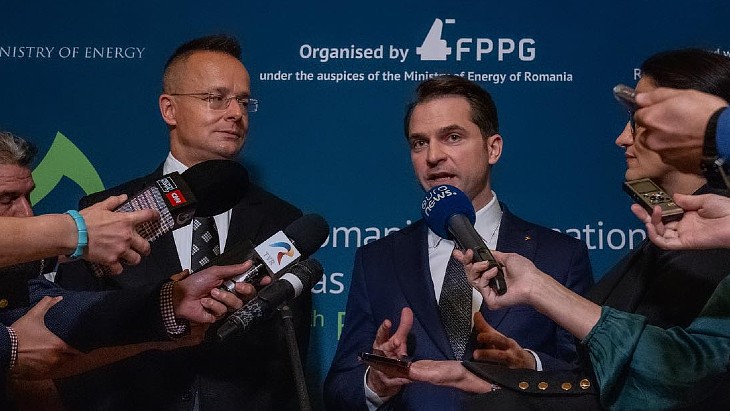
Source: https://www.world-nuclear-news.org/Articles/Study-to-consider-SMR-deployment-at-Halden
A new company, Halden Kjernekraft AS, has been founded by Norsk Kjernekraft, Østfold Energi and the municipality of Halden to investigate the construction of a nuclear power plant based on small modular reactors (SMRs) at Halden. A research reactor once operated in Halden, in Norway.
Halden Kjernekraft - 20% owned by Halden municipality with Norsk Kjernekraft and Østfold Energi owning 40% each - will initially carry out investigations and surveys "as a decision-making basis for any next step", the partners said.
The initiative to investigate the deployment of SMRs at Halden came from the municipality itself, which has more than 60 years of experience of hosting the Institute for Energy Technology's (IFE's) nuclear fuel and materials testing reactor. It was declared permanently shut down by IFE in June 2018.
The decision to found Halden Kjernekraft was made by the Halden municipal council on 9 November.
The partners noted there is currently a power deficit in the Oslo, Akershus and Østfold region of 16 TWh. In addition, Norwegian grid operator Statnett has warned that there is no available capacity for new, larger consumption without new production and increased network capacity into eastern Norway. This is not expected until 2035 under current plans and has major consequences for Østfold.
"The time is ripe to investigate whether small modular reactors can be part of the solution to the power shortage in Østfold," said Roar Vevelstad, municipal director in Halden municipality. "We must explore all possibilities and not be afraid of knowledge."
"The municipality has long experience as a host for nuclear reactors and has solid expertise to make good decisions," added Norsk Kjernekraft CEO Jonny Hesthammer. "The citizens are well used to nuclear reactor operations, and see that it contributes to creating long-term jobs. It forms a very good starting point for a collaboration, where we thoroughly investigate whether nuclear power can contribute to solving the municipality's future power needs."
"We are happy about the positive decision from Halden municipality," said Martin Vatne, director of strategy and business development at Østfold Energi. "Now we want to investigate and acquire more knowledge in the first instance. This is not an alternative to renewable energy, but it can be a supplement in the longer term. Modern nuclear power has advantages related to area, controllability and production hours, but is still controversial. There are many questions that need to be answered well. That is why we now want to put this on the agenda."
Norsk Kjernekraft aims to build, own and operate SMR power plants in Norway in collaboration with power-intensive industry. It says it will prepare licence applications in accordance with national regulations and international standards. It will follow the International Atomic Energy Agency's approach for milestones, and focus on what creates value in the early phase. Financing will take place in collaboration with capital-strong industry and solid financial players.
The company entered into an agreement of intent earlier this year on the investigation of nuclear power with several municipalities.
Last week, Norsk Kjernekraft submitted a proposal to Norway's Ministry of Oil and Energy for an assessment into the construction of a power plant based on multiple SMRs in the municipalities of Aure and Heim.

Source: https://www.world-nuclear-news.org/Articles/UK-and-USA-team-up-on-fusion-development
The US Department of Energy (DOE) and the UK Department for Energy Security and Net Zero (DESNZ) have announced a new strategic partnership to accelerate the demonstration and commercialisation of fusion energy.
The agreement was signed in Washington, DC, by US Deputy Secretary of Energy David Turk and the UK's Minister for Nuclear and Networks Andrew Bowie.
The partnership will bring together scientists and engineers from the UK and USA to address the technical challenges of delivering commercially viable fusion energy and allow shared access for facilities and stimulate new R&D opportunities. It will also standardise international regulatory frameworks and codes of practice, develop resilient supply chains for fusion materials to support the industry long-term and promote skills development.
A coordinating committee will meet for the first time in early 2024. Led jointly by the DOE and DESNZ, it will include representatives from national laboratories, academia and industry to advance a shared fusion vision. The committee is expected to form and oversee working groups to identify and advance priority US-UK collaborative opportunities.
The USA and the UK have a long history of collaborative efforts in generating scientific and technological progress in fusion energy research and development, supported predominantly in the USA through the DOE Office of Science's Fusion Energy Sciences programme and in the UK through the UK Atomic Energy Authority (UKAEA), the DOE noted. "The new partnership builds on this collaborative history, including for example the UKAEA-Princeton Plasma Physics Laboratory Fusion Fellowships as well as research on the MAST-U tokamak in the UK and the DIII-D National Fusion Facility in the United States."
DESNZ noted that the partnership marks the UK's first formal international fusion collaboration since the recent launch of the GBP650 million (USD799 million) Fusion Futures Programme. This is on top of the GBP700 million that has already been allocated to UK fusion energy programmes between 2022 and 2025.
"International collaboration is key for advancing fusion and achieving our ambition of getting a commercial fusion reactor grid-ready by 2040," Bowie said. "The UK and the US are world-leaders in this technology, and pooling our resources will unlock new private sector investment. This bold new partnership will help turn our fusion ambitions into reality."
Turk added: "The United States and the United Kingdom have long partnered on some of the world's most ambitious scientific endeavours. I look forward to welcoming Minister Bowie to Washington to build on that partnership to advance fusion energy that could ultimately help us achieve our countries' shared goal of ending the climate crisis."

Source: https://www.world-nuclear-news.org/Articles/Former-US-reactor-site-released-for-unrestricted-u
The US Nuclear Regulatory Commission (NRC) has released most of the site of the former Zion nuclear power plant in Illinois for unrestricted use, marking the completion of decommissioning at the site. A storage facility for the plant's used fuel will remain under NRC licence and oversight.
Zion, on the shores of Lake Michigan, was home to two pressurised water units: unit 1 operated from 1973 until 1997; unit 2 from 1974 to 1996. Both were declared permanently shut-down in 1998 by the plant's operator at the time, Commonwealth Edison (part of Exelon). In 2010, the reactor's licences were transferred to EnergySolutions subsidiary ZionSolutions in a first-of-its kind arrangement for accelerated decommissioning. The Zion units are now part of Constellation Energy's portfolio since the separation of Exelon Generation's regulated and competitive energy businesses.
Releasing the site for unrestricted use means that any residual radiation is below NRC's limits and will no longer be under NRC regulatory controls, the regulator said. The NRC's determination that ZionSolutions has satisfactorily finished decommissioning of the plant and decontamination of the site to meet the agency's radiation protection standards clears the way for ZionSolutions to transfer the spent fuel storage facility licence to Constellation Energy Generation, which will be responsible for the security and protection of Zion’s spent fuel facility until an offsite storage facility or permanent disposal site becomes available.
According to Constellation, the USD1 billion, 10-year project to decommission the Zion plant is the largest commercial nuclear plant dismantling ever undertaken in the USA.
Constellation is free to use the remainder of the former plant site for any application, the NRC said.
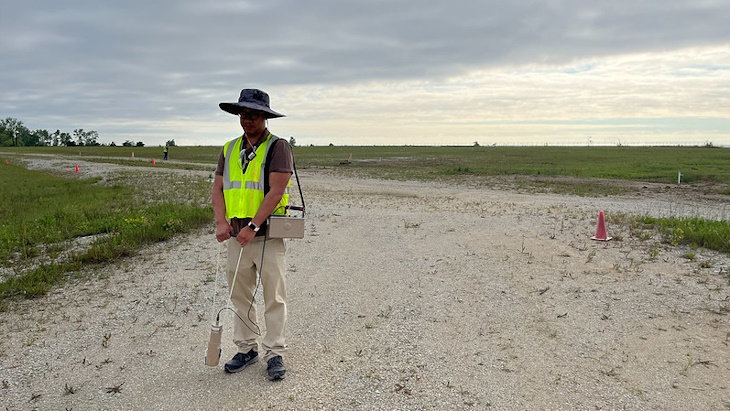
Source: https://www.world-nuclear-news.org/Articles/Centrus-makes-first-HALEU-delivery
The first delivery of high-assay, low-enriched uranium (HALEU) produced at the American Centrifuge Plant in Piketon, Ohio, to the US Department of Energy (DOE) marks the end of the first phase of a cost-share contract signed in 2022.
The plant is the first new US-owned uranium enrichment plant using US technology to begin production since 1954, according to the company. Enrichment operations began at the plant in October.
HALEU - uranium enriched to between 5% and 20% uranium-235 - will be used in the advanced nuclear fuel required for most of the next-generation reactor designs currently under development. The DOE has been supporting measures to ensure the availability of the material for those reactors when needed, and also to build a domestic HALEU supply chain.
"Centrus is proud to be pioneering American HALEU production, with our first delivery of the fuel that is urgently needed to support the demonstration and commercialisation of advanced reactors," said Centrus President and CEO Daniel Poneman. "This critical milestone is essential to meeting the Department's near-term HALEU needs, while laying the groundwork for the full restoration of America's lost domestic uranium enrichment capacity."
Construction of the 16-centrifuge demonstration cascade plant began in 2019, under contract with the DOE. The two-phase contract awarded to Centrus last year included cost-shared funding to finish the cascade, complete final regulatory steps, begin operating the cascade, and produce up to 20 kg of HALEU by the end of this year. The first phase of the contract saw Centrus and the DOE each contributing about USD30 million of the USD60 million overall cost.
The delivery by Centrus of more than 20 kilograms of HALEU to the DOE means that phase one of the contract has now been completed and Centrus can move ahead with the second phase: a full year of HALEU production at the 900 kilograms per year plant. In this phase of the contract, the DOE will pay Centrus on a cost-plus incentive fee basis for the HALEU the company produces. The HALEU which DOE has taken delivery of will remain on site in Piketon in a specially constructed a storage facility until it is needed.
Centrus says that with sufficient funding and offtake commitments, it could significantly expand production: a full-scale cascade of 120 centrifuge machines able to produce some 6,000 kilograms of HALEU per year could be brought into production within 42 months of funding being secured, and more cascades could be added after that. Building and operating such a plant would support thousands of direct and indirect jobs across a nationwide manufacturing supply chain, Centrus said.
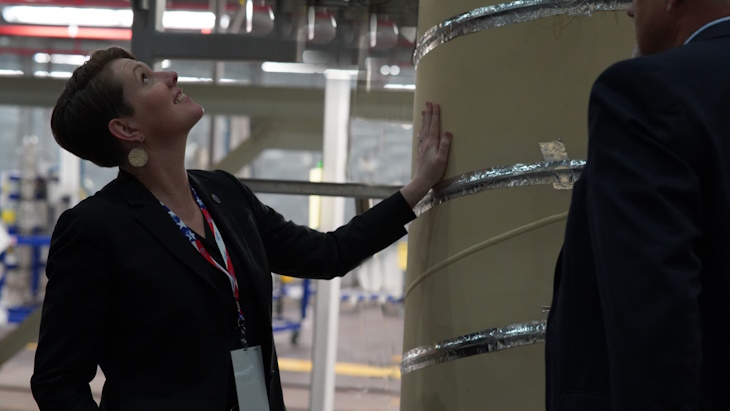
Source: https://www.world-nuclear-news.org/Articles/Akkuyu-3-reactor-pressure-vessel-delivered
The 350-tonne reactor pressure vessel for Akkuyu unit 3 in Turkey has been delivered after a 1700-mile journey.
The cylindrical reactor pressure vessel is 11.45 metres long and 5.7 metres wide and was produced by the Volgodonsk branch of AEM-Technologies JSC of Atommash, part of Atomenergomash, the machine production division of Rosatom.
The Akkuyu plant, in the southern Mersin province, is Turkey's first nuclear power plant. Rosatom is building four VVER-1200 reactors, under a so-called BOO (build-own-operate) model. Construction of the first unit began in 2018. The 4800 MWe plant is expected to meet about 10% of Turkey's electricity needs, with the aim that all four units will be operational by the end of 2028.
The RPVs of units 1 and 2 were installed in June 2021 and September 2022, respectively. The RPV for unit 3 is a record fifth shipped from the production site in 2023.
Sergei Butckikh, First Deputy CEO of Akkuyu Nuclear JSC, said: "After the completion of mandatory incoming control procedures the reactor pressure vessel shall be handed over for erection. Approximately 300 different checks and control operations are made during its manufacture. This equipment operates in special conditions. It should provide leak tightness of the reactor during operation, safe refuelling and operation of the reactor plant for more than 60 year life."

Source: https://www.world-nuclear-news.org/Articles/IAEA-s-Grossi-praises-Slovakia-s-nuclear-progress
International Atomic Energy Agency (IAEA) Director General Rafael Mariano Grossi has visited the "success story" of Mochovce's new nuclear power unit, and held talks with the president and prime minister, during his first visit in the role to Slovakia.
The visit came shortly after the commissioning of Mochovce 3, with operator Slovenské elektrárne providing an update too on the progress of unit 4. Together with Denisa Saková, Slovakian Economy Minister, and Marta Žiaková, Chairwoman of the Nuclear Regulatory Authority of the Slovak Republic, Grossi visited the turbine hall and control room of unit 3 and also visited unit 4, which is under construction.
Grossi said: "When the fourth unit comes into operation, this country will be practically decarbonised. Slovakia will be able to say that it produces energy without harming the environment. Slovaks can be rightly proud of their achievement. Mochovce produces clean energy for Slovakia, but also for the whole of Europe. When the fourth unit starts up, you will be able to export it. It is a success story. The timetable allows us to assume that already in 2025 we will benefit from the energy produced by the fourth unit."
Saková said: "Nuclear energy plays a really important role for us in providing a stable, safe source of energy and especially a carbon-neutral source of energy. When complemented by variable renewable energy sources, it can help us contribute to solving global energy and climate problems."
Branislav Strýček, chairman and CEO of Slovenské elektrárne, said: "The journey is not over, there are other challenges ahead of us, the completion and commissioning of Mochovce unit 4, the implementation of the study on small modular reactors. Our goal is to continue investing in the technologies of the future in order to ensure sufficient energy and a sustainable future for the people of Slovakia and Europe."
After his meeting with President Zuzana Caputova and Prime Minister Robert Fico in Bratislava, Grossi posted a social media message offering his congratulations to the president "on the success of the Slovak nuclear programme, a cornerstone in efforts to decarbonise the economy" as well as thanks for the "steadfast support" for the agency's work at the Zaporizhzhia nuclear power plant.
Construction of the first two VVER-440 units at the four-unit Mochovce plant started in 1982. Work began on units 3 and 4 in 1986, but stalled in 1992. The first two reactors were completed and came into operation in 1998 and 1999, respectively, with a project to complete units 3 and 4 beginning ten years later. Unit 4's schedule has been to follow about one or two years behind unit 3. Each of the units will be able to provide 13% of Slovakia's electricity needs when operating at full capacity.
In total, Slovakia currently has five operational power reactors at Mochovce and Bohunice. Once Mochovce unit 4 is complete, the country is expected to produce 70% of its electricity through nuclear energy.
